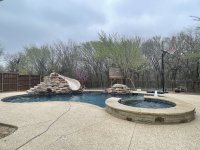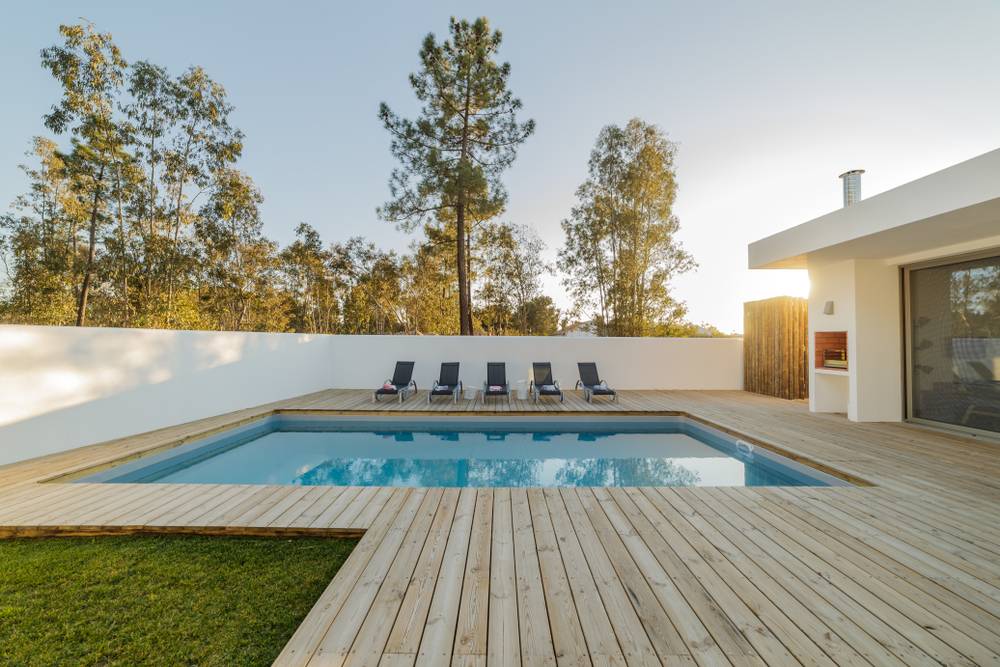Hi Everyone,
We just finished construction on our new in-ground pool in February 2023! It's a gunite/plaster pool with 13k gallons, a spa, two waterfalls, and a rock slide! We've already gotten quite a bit of use in the pool with the family and some friends. Living in the Dallas, TX area helps make swimming a nearly year-round activity. I'm a geek at heart and love learning new things, so I'm enjoying the process of figuring out the right steps to take to ensure the pool's chemicals and balance stay within the ranges that they should be. I already have a Taylor Test kit and it feels kinda like a little kid's chemistry play kit!!!
Anyway, I'm looking forward to learning from others when I face problems and enjoying the process of maintaining our pool!
We just finished construction on our new in-ground pool in February 2023! It's a gunite/plaster pool with 13k gallons, a spa, two waterfalls, and a rock slide! We've already gotten quite a bit of use in the pool with the family and some friends. Living in the Dallas, TX area helps make swimming a nearly year-round activity. I'm a geek at heart and love learning new things, so I'm enjoying the process of figuring out the right steps to take to ensure the pool's chemicals and balance stay within the ranges that they should be. I already have a Taylor Test kit and it feels kinda like a little kid's chemistry play kit!!!
Anyway, I'm looking forward to learning from others when I face problems and enjoying the process of maintaining our pool!





